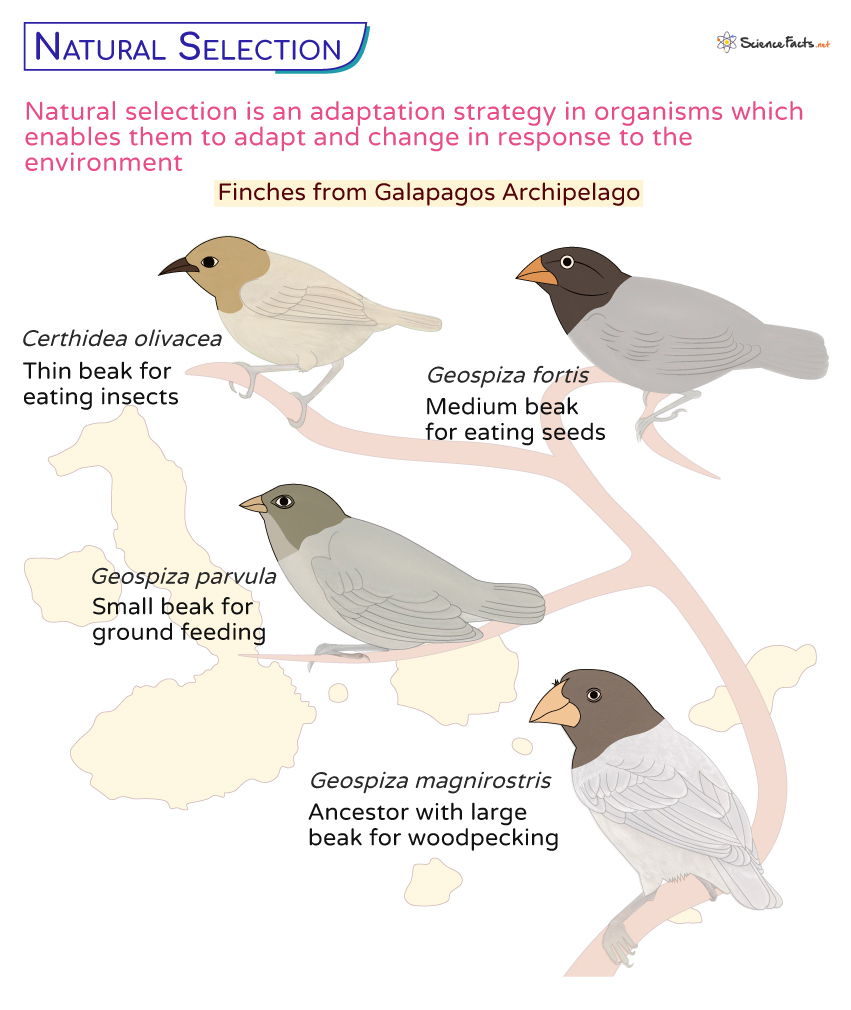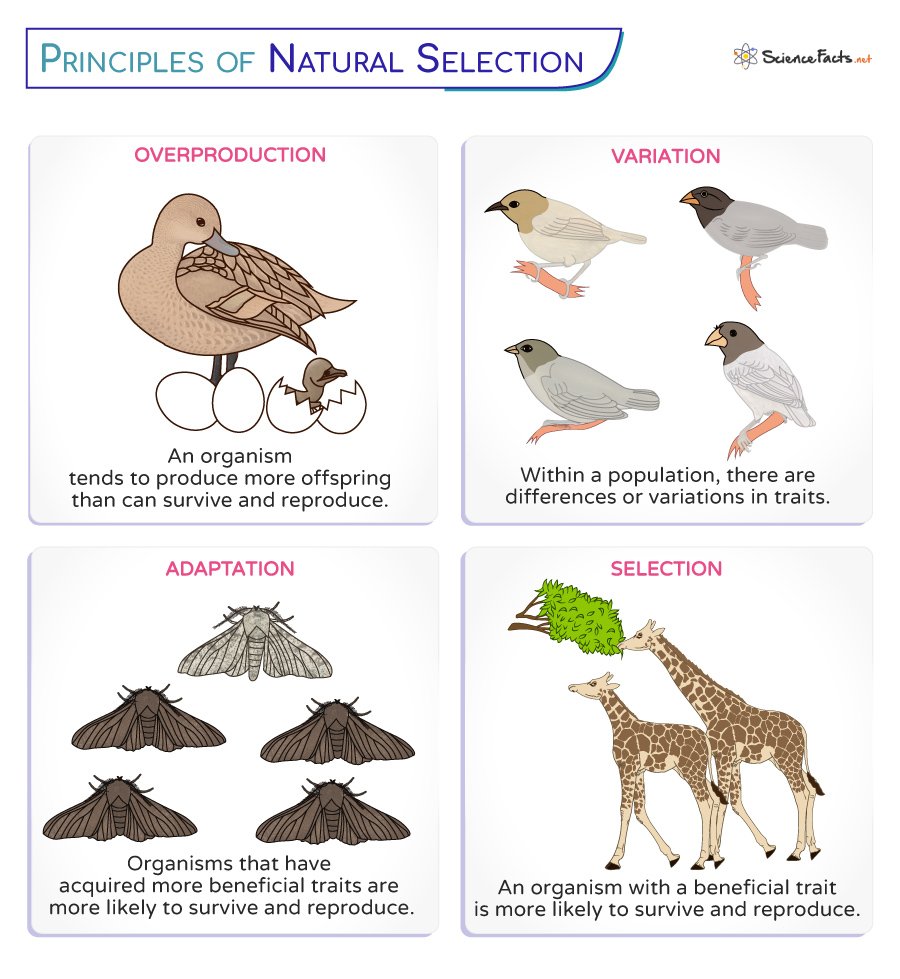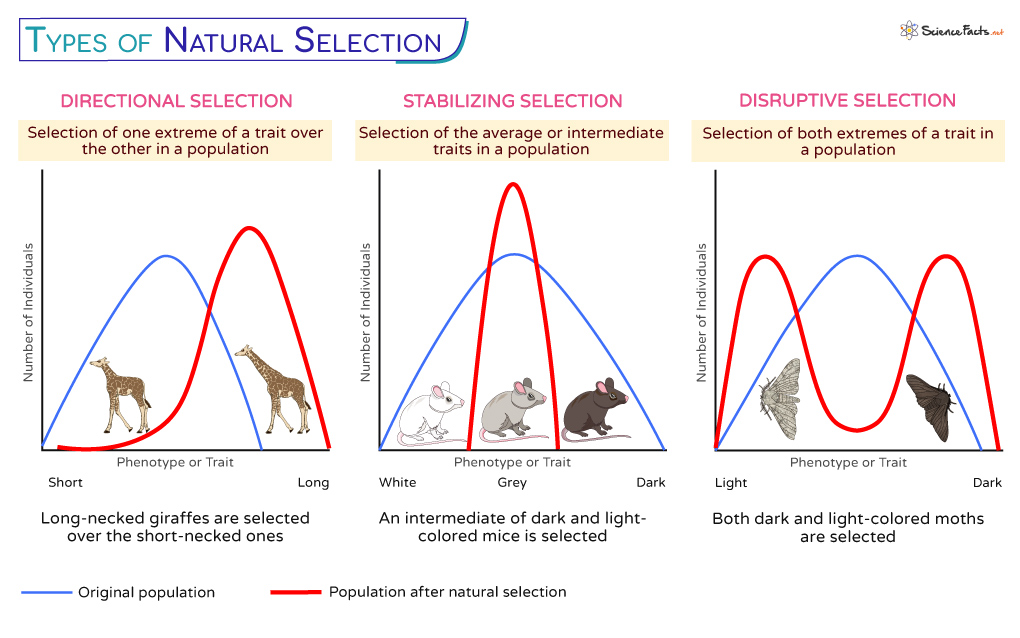Organisms with better adaptive traits survive better than the less adapted ones in a specific environment. These favorable traits are then passed on to their offspring, which become common in the subsequent generations over time. This phenomenon can lead to speciation, developing a new species from the existing ones. Thus, natural selection and other processes like mutation, migration, and genetic drift drive evolution.
Who Discovered the Theory of Natural Selection
Examples of Natural Selection
Principle of Darwin’s Natural Selection
Types of Natural Selection
Natural Selection vs. Artificial Selection
Industrial Melanism in Peppered Moths: During the Industrial Revolution in England, pollution caused trees to darken with soot. Light-colored peppered moths became easy targets for predators, while dark moths were better camouflaged and survived. Over time, the population shifted towards darker moths.Different-sized Beak in Galapagos Finches: Charles Darwin observed that in the Galapagos Islands, the different species of finches developed distinct beak shapes based on the types of food available on their respective islands. Finches with long, slender beaks are better adapted to feeding on insects, while those with short, stout beaks are better suited for cracking seeds.Antibiotic Resistance in Bacteria: Bacteria can evolve resistance to antibiotics. When exposed to antibiotics, bacteria with resistant traits survive and reproduce, leading to the emergence of antibiotic-resistant strains.
Several other factors or components like rate of development, mating success, fertility, and lifecycle are also found to affect natural selection in nature.
1. Directional Selection
This type of selection favors one extreme of a trait over the other. An example is the evolution of longer necks in giraffes, enabling them to reach higher leaves on trees for food.
2. Stabilizing Selection
Here, the average or intermediate traits in a population are selected. For example, in human birth weights, very low or very high birth weights are less common because babies with average weights have a better chance of survival.
3. Disruptive Selection
In disruptive selection, both extremes of a trait are favored, while the intermediate forms are at a disadvantage. It often leads to the formation of two distinct subgroups within a population. Apart from the three types, there is a special form of natural selection called sexual selection, in which a member of one sex chooses a mate of the other sex and competes with members of the sex for access to the member of the other sex. The extravagant tail feathers of a peacock are an example.


